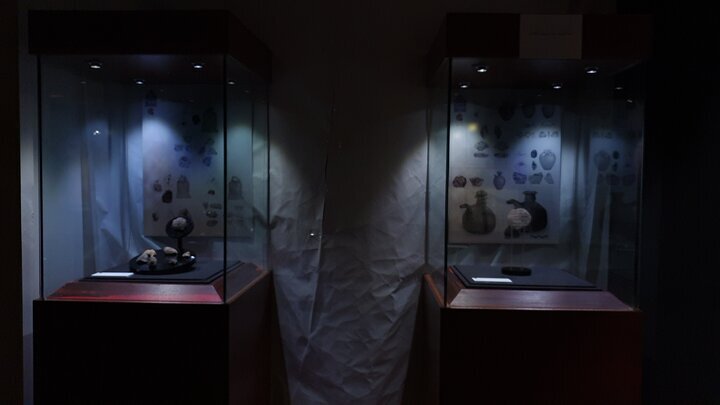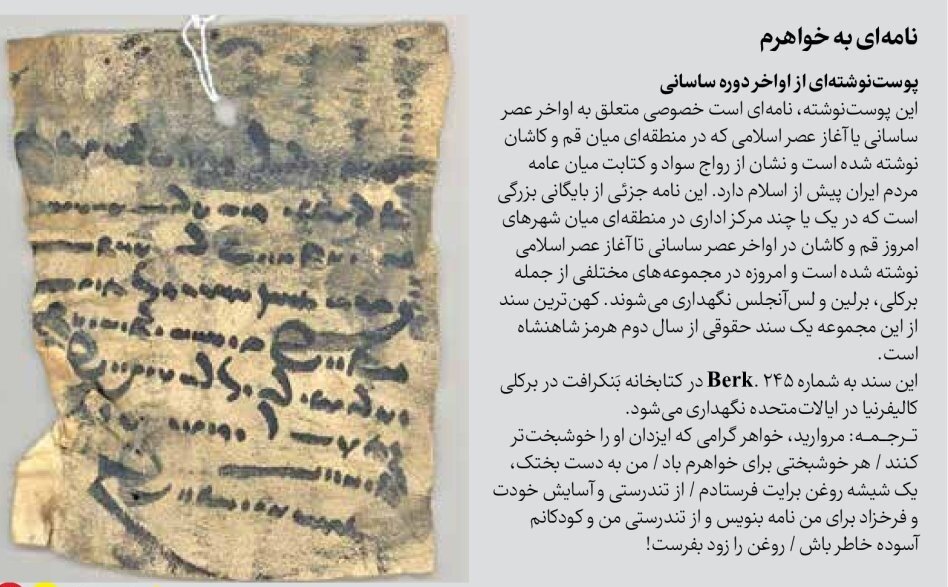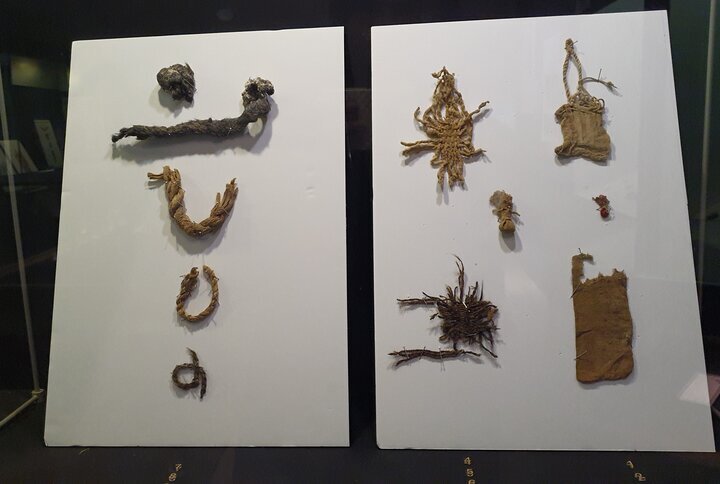From reed flute to one-centimeter bags, glimpses of Hastijan’s cave discoveries

TEHRAN – A special exhibition has been inaugurated at the National Museum of Iran showcasing peculiar findings from Hastijan’s Zel Cave, ranging from a Sasanian-era reed flute to one-centimeter bags, sleeves, and pieces of personal ornamentation.
Over the past century, this cave has been looted several times by unauthorized excavators, and many of its Pahlavi-scripted leather inscriptions have been plundered, with a substantial number held in American and German universities and private collections, Mehr reported on Monday.
Now, a few artifacts retrieved from this excavation are on display to underscore their significance. Approximately 35 out of around 300 discovered items are exhibited on the sidelines of the Research Week programs by the Research Institute of Cultural Heritage.

Zel Cave, also known as Takht-e Qaleh, is situated within the rocky body south of Takht-e Qaleh Mountain, approximately 14 kilometers southeast of Delijan and 2.5 kilometers northeast of Hastijan village, on the right side of the asphalt road from Isfahan to Delijan, at an altitude of 1,280 meters above sea level. Its entrance stands at a height of 9 meters, accessible solely through mountaineering equipment and ladders. The cave comprises multiple passages and levels.
Due to unauthorized excavations, the existing architecture within the cave's passages has been damaged.
Over the past century, this cave has been looted several times by unauthorized excavators, and many of its Pahlavi-scripted leather inscriptions have been plundered, with a substantial number held in American and German universities and private collections.This cave, which had not been subject to archaeological exploration for 70 years, was excavated in October and November of the current year. Archaeologists concluded that the cave had been emptied of artifacts due to unauthorized digging between the 1950s and 1970s.
Artifacts recovered from this excavation phase include leather fabrics inscribed with writings, wooden tools, pottery fragments, and animal bone remains dating back to the late Sasanian and early Islamic periods.
A part of a sleeve without an owner!
Sections of a garment's sleeves, its owner's whereabouts, and their fate remaining unknown, are preserved amid the cave's stones and dry space. These sleeve ends are now showcased in museum display cases along with a part of a shoe lacking its sole.
Other leather inscriptions from the late Sasanian and early Islamic periods have been found but remain unread. Now, some of these fabrics, leather inscriptions, and ropes made from goat hair are exhibited in the halls of the National Museum of Iran.
The magic of a reed flute
One of the findings pertains to a reed flute, remarkably similar in shape and composition to modern-day flutes. This flute indicates that Iran had written materials from the Sasanian era using this instrument. Archaeologists believe that this discovery has pushed back the history of reed-writing instruments by 1,400 years.
Inscribed pottery, a seal in the form of a rose, a ring seal, clay seals, part of a wicker basket, wooden tools, and combs, and a necklace alongside the fabrics from that period constitute another section of the Hastijan’s cave exhibition.
A letter from brother to sister
One of the most significant findings from this cave is related to a document written by a brother to his sister. This document, which is being kept at the Bancroft Library in Berkeley, California, demonstrates the importance placed on honoring women's status during the Sasanian period and afterward. The content of this letter has attracted considerable attention from archaeologists, researchers, linguists, experts, and even visitors.

This private letter dates back to the late Sasanian era or the beginning of the Islamic period and was probably written somewhere between Qom and Kashan. It indicates widespread literacy and writing among the Iranian populace before the advent of Islam.
In the document, it is written: May the pearls of my dear sister, whom God may make happier, bring every happiness to my sister. I, through the hand of fate, have sent a bottle of pure oil. Write to me about your health and well-being, and be reassured about my 'well-being' and my children.

However, the last line of this leather inscription, ‘Send the oil soon,’ remains a matter of dispute among archaeologists. Some claim this sentence exists in the leather inscription, while others refute its presence.
AFM
